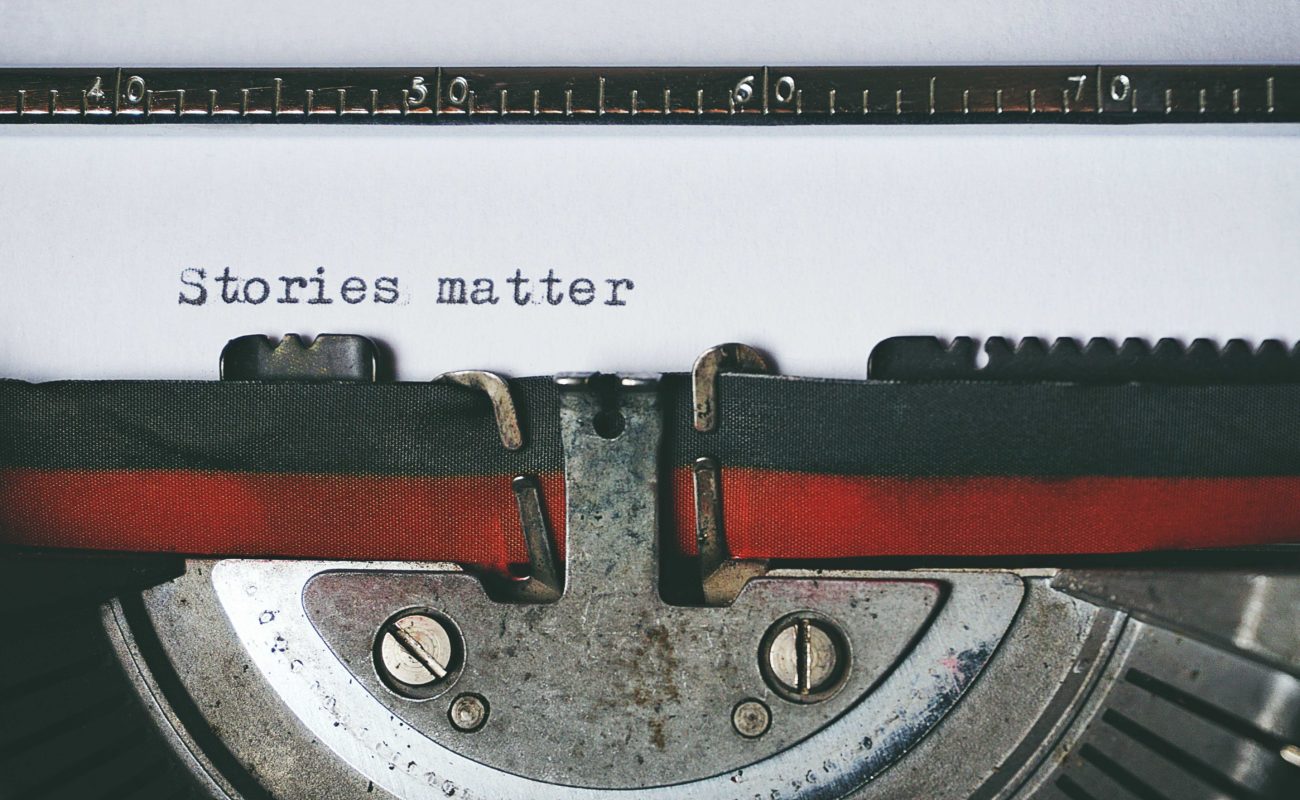Storytelling in modern communication
In PR, especially in the case of crisis communication, we usually already have the attention of the public, and must react to a punctual event in a concise, informative way. But, as just mentioned, this is a punctual tool used to convey complex messages in a critical moment. With storytelling, on the other hand, we are trying to draw attention to something through a method that is more promotional and invites others to share and tell your story.
For a long time, companies have mainly focused on their product or service in a “top-down” communication: advantages, quality, price, … Communicating with your target groups nowadays is no longer purely informative. Sales processes on social media platforms such as Instagram and TikTok are the best proof of this. Since buying behaviour has changed, especially through online shopping, this is no longer sufficient to transform a potential customer into a purchasing one. This is where storytelling jumps in – it is used to sell an experience, a feeling, something that is made attainable or that we’ve experienced before.
A good way of illustrating this is by using transactional analysis. Mainly used as a method of therapy, the concept sees a transaction as a communication exchange between people and pushes us to question which ego state is currently communicating to increase our awareness of our thoughts and behaviours in interactions with others.
When trying to “sell something”, it’s important to connect to your audience on the same level, making your message and values attainable and comprehensible. This is especially useful to institutions, since their position reinforces communication from a position of power and superiority, which makes it difficult to establish a connection.
Structuring storytelling using the 4Ps
Effective storytelling is about the people, the place, the plot and the purpose. These do not necessarily need to follow this sequence, and some details are not relevant in some stories. However, you should never drop the who, how and why!
The story must be about someone, usually a hero. Who is our hero? Where is that person? When is our action happening? What is happening? How is it happening? And why are you even telling this? You should always have a raison d’être for communicating. Don’t waste your, your team’s and a journalist’s time by throwing empty images and sentences into the world.
“Telling a story is not about telling lies or nonsense.”
Make the story, visualise the story, tell the story and then optimise. Your story needs to be engaging, accessible and credible.
Techniques
Once you’ve structured your content, there are a wide range of classical storytelling techniques used in children’s stories, Netflix series’ or Blockbusters that you can rely on. The most famous one is probably the hero’s journey, as seen in The Lion King, Matrix, Harry Potter or Apple’s Apple at Work – The Underdogs ad. In the example of the hero’s journey, our hero faces a challenge, crosses into the unknown, comes across even more challenges on the way, meets a sage/mentor, is confronted with a final challenge to finally return back home.
Other techniques that I’ve found useful (especially for digital storytelling): In Media Res, Petal Structure, The Mountain.
And there are more: Sparklines, Nested Loops, Converging Ideas, False Start, …
More about storytelling techniques here.
Telling a story is as if you’re wrapping your why into wrapping paper. The content stays the same, the way it is presented changes. Especially if you’re working on communicating on different channels, the advantage here is that a same story can be presented visually or textually.
Visuals can be: photo, illustration, gif, meme, video, infographic, audio
Grammatical structures
Not only the visual form but also the textual form is relevant. Your sentence structure tells a story. And it doesn’t even need to be grammatically correct. Take the example of McDonald’s I’m Loving It. Grammatically speaking the static verb love can’t be used in a continuous form. That doesn’t change the fact that the whole world knows and uses this slogan because the effect of taking a static verb and putting it into a present continuous makes the slogan unusual and thus memorable. It probably helped that Justin Timberlake helped launch the campaign.
With your text, small changes make a big difference. Devices such as punctuation, symbols, emojis, upper case & lower case change the story that you are telling and help convey a tone or feeling.
Take this example:
The girl threw the ball.
The girl threw the ball!
The girl threw the ball?
Now try speaking it out loud. The difference can be heard and connects different emotion to one and the same sentence.
“Telling a story is nothing impossible.”
Stories are embedded in all writing, regardless of form or genre. It engages the audience, is used to persuade, and appeals to our ethos, pathos and logos. Drawings from the stone age, papyrus scrolls, …, they are stories presented in different ways, so be creative.
An advantage is that stories are continuous, told over time. A mistake that is often made: we mention something to the public once and then stop talking about it. You prepare a press kit, announce something to the world, 10 newspapers cover it and after three days no one talks about it any longer. Even though it is a huge topic inside your company and will be relevant to the public again (let’s say a road construction project with a timeframe of 3 years). What the story does is it helps fill the gaps. Another important point to make: you can simplify your content through the use of a story and make it accessible for everyone.
Storytelling is an incredibly powerful tool, if:
- used correctly,
- aligned with your identity (don’t jump on a bandwagon, this might result in backlash),
- it has a hero, problem & solution,
- used to surprise people,
- you show, but don’t tell,
- you use the unknown to your advantage,
- you focus on your key message.
You might wonder – where is the connection to PR? Storytelling goes hand in hand with your PR messaging strategy. Think about the foundation of your message house: the why, who and how. The content, the heart of your message, stays the same. You’ve simply presented it differently.
Oxygen & Partners offers a half-day training course on storytelling, particularly useful if your company or department wishes to adopt a new perspective and tone. Get in touch via contact@oxygen.lu




